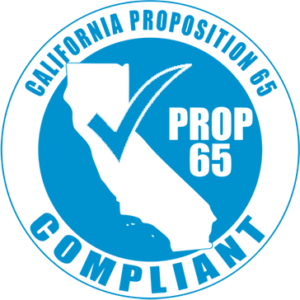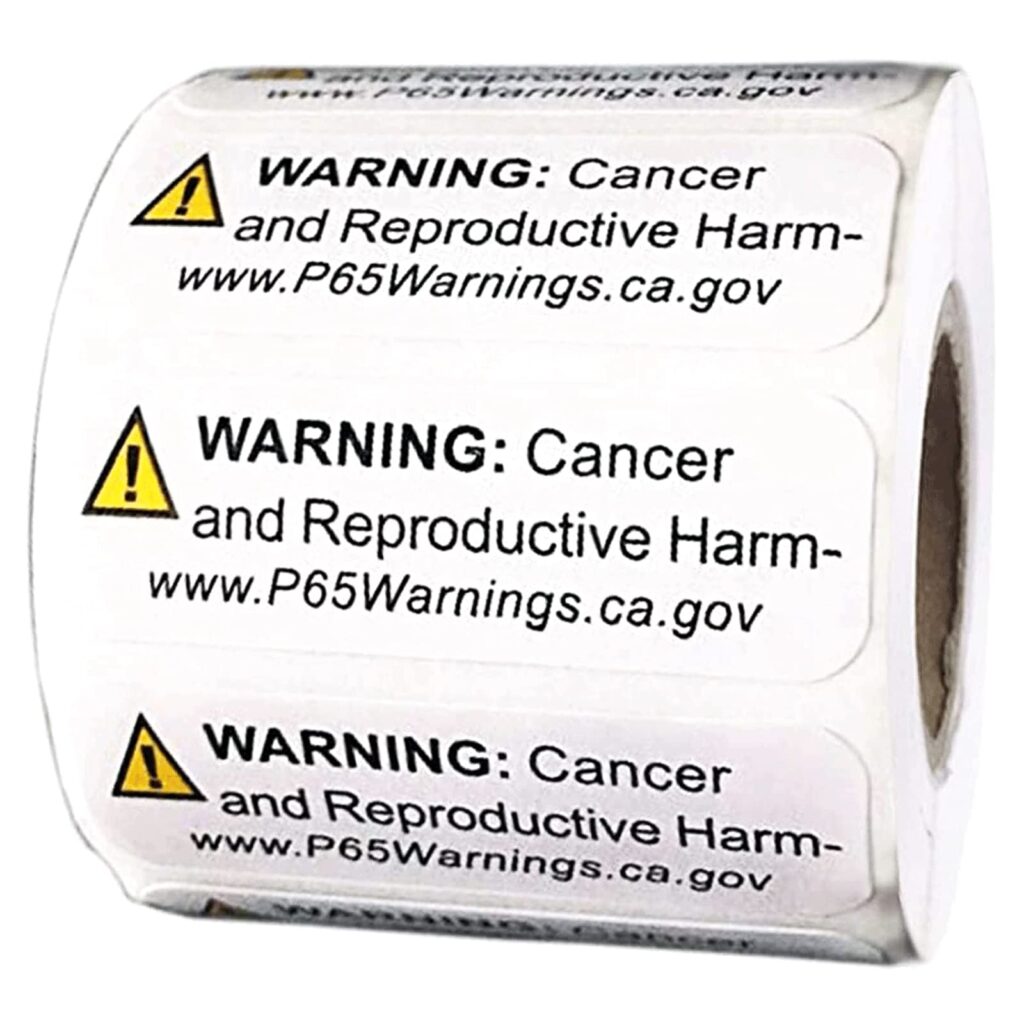California’s Proposition 65, officially known as the Safe Drinking Water and Toxic Enforcement Act of 1986, stands as a pivotal regulation aimed at protecting residents from exposure to harmful chemicals. This comprehensive guide delves into the origins of Prop 65, its compliance requirements, classification procedures, the range of products it affects, and essential considerations for exporters to the U.S.
A Brief History of Proposition 65
In the mid-1980s, growing concerns about toxic chemicals contaminating California’s drinking water and environment spurred the creation of Proposition 65. Environmental activists, including political strategist Tom Hayden and actress Jane Fonda, championed the initiative to address these issues. Despite initial skepticism, voters passed the proposition by a 63-37 percent margin in November 1986, leading to its enactment as the Safe Drinking Water and Toxic Enforcement Act of 1986.
The primary objectives of Prop 65 are twofold:
- Protect Drinking Water: Prevent businesses from discharging chemicals known to cause cancer or reproductive harm into sources of drinking water.
- Inform the Public: Mandate that businesses provide clear warnings to Californians about significant exposures to such chemicals, enabling informed decisions about their health and safety.

Understanding Prop 65 Compliance
Compliance with Prop 65 involves several critical components:
- Chemical List Maintenance: The California Office of Environmental Health Hazard Assessment (OEHHA) maintains and annually updates a list of chemicals that cause cancer, birth defects, or other reproductive harm. Since its first publication in 1987, this list has expanded to include approximately 900 chemicals.
- Warning Requirements: Businesses with 10 or more employees must provide “clear and reasonable” warnings before exposing individuals to listed chemicals. These warnings inform consumers about potential exposures, allowing them to make informed choices. The standard warning language is: “WARNING: This product contains chemicals known to the State of California to cause cancer and birth defects or other reproductive harm.”Warnings can be provided through various means, including product labels, workplace postings, or notices in rental properties.
- Discharge Prohibition: Prop 65 prohibits businesses from knowingly discharging significant amounts of listed chemicals into sources of drinking water.
Steps for Classification and Compliance
To ensure compliance with Prop 65, businesses should undertake the following steps:
- Identify Relevant Chemicals: Review the current Prop 65 chemical list to determine if any listed substances are in your products or processes. The list is available on the OEHHA website and is updated annually.
- Assess Exposure Levels: Evaluate the potential exposure levels of listed chemicals to consumers or employees. Prop 65 specifies safe harbor levels, including No Significant Risk Levels (NSRLs) for carcinogens and Maximum Allowable Dose Levels (MADLs) for reproductive toxins. If exposures are below these levels, warnings may not be required.
- Provide Warnings if Necessary: If exposure levels exceed safe harbor thresholds, implement clear and reasonable warnings. Ensure that warnings are conspicuous and effectively communicate the potential risks associated with the chemical exposure.
- Maintain Documentation: Keep detailed records of chemical assessments, exposure evaluations, and warning implementations. This documentation is crucial in demonstrating compliance during inspections or in response to enforcement actions.
Products Affected by Proposition 65
Prop 65 impacts a wide array of products and industries, including:
- Consumer Goods: Items such as electronics, jewelry, clothing, furniture, and household products may contain chemicals like lead, phthalates, and formaldehyde.
- Food and Beverages: Certain foods and beverages may contain naturally occurring or introduced chemicals that are on the Prop 65 list.
- Personal Care Products: Cosmetics and personal care items may contain chemicals such as phthalates and formaldehyde releasers.
- Industrial Products: Products used in construction and manufacturing may contain chemicals like asbestos and crystalline silica.
Considerations for Exporters to the USA
Exporters aiming to introduce products into the U.S. market, particularly in California, must be vigilant about Prop 65 compliance. Key steps include:
- Understand the Scope: Recognize that Prop 65 applies to a broad range of products, including consumer goods, food items, and industrial products. Even if your product is not intended for the California market, it may still end up there, necessitating compliance.
- Assess Chemical Content: Conduct thorough assessments to identify any Prop 65 listed chemicals in your products. This may involve reviewing material safety data sheets (MSDS) from suppliers and conducting laboratory testing.
- Implement Clear Warnings: If your products contain listed chemicals above safe harbor levels, ensure that clear and reasonable warnings are provided. This includes labeling on the product and providing warnings on online platforms if the products are sold through e-commerce channels.
- Stay Informed on Regulatory Changes: Prop 65 regulations are subject to updates, including changes to warning label requirements and the list of regulated chemicals. For instance, new labeling requirements for short-form warnings will become effective on January 1, 2025, with a transition period until January 1, 2028. intertek.com
- Maintain Comprehensive Records: Keep detailed records of compliance efforts, including testing results, supplier communications, and labeling practices. This documentation is essential in

Facts About Prop 65 Compliance That Every Business Must Know
1. Prop 65 Applies Even If Your Product Is 100% Safe
You don’t need to prove actual harm for a product to require a Prop 65 warning. If a listed chemical is present above the threshold—even in tiny amounts—it requires a warning, regardless of whether it poses a real-world risk.
2. Even Coffee and French Fries Need a Warning
Until recently, coffee was listed under Prop 65 due to acrylamide, a chemical formed when roasting beans. The same applies to potato chips and French fries! Only after legal battles did California clarify that coffee does not require a warning.
3. Prop 65 Labels Are Everywhere (Even on Safe Products)
You’ve likely seen the “This product contains chemicals known to the State of California to cause cancer” warning on random products like furniture, car parts, or electronics. Many companies add the label just to avoid lawsuits, even if their product is under safe exposure levels.
4. Businesses Can Get Sued for Missing a Warning Label
Prop 65 allows private citizens and law firms to sue companies that don’t comply. This has led to a wave of lawsuits, with some law firms making millions by targeting businesses—even small ones—that fail to place warning labels.
5. The Chemical List Keeps Growing (Now Nearly 900 Chemicals!)
When Prop 65 first launched in 1987, it had around 30 chemicals. Today, the list has almost 900, and it keeps expanding. If your business uses chemicals that are later added to the list, you may suddenly find yourself non-compliant overnight.
6. It’s Not Just a U.S. Problem—Exporters Are at Risk Too
Even if your company is based outside the U.S., if you export to California, Prop 65 applies to you. Many overseas manufacturers don’t realize they need to meet these regulations until their shipments are blocked.
7. A Prop 65 Violation Can Cost You $2,500 Per Day—Per Violation!
Failing to comply can lead to massive fines—up to $2,500 per day for every violation. This means a single product without the proper warning labels could cost a company hundreds of thousands of dollars in legal penalties.
Conclusion: Why Prop 65 Compliance Matters More Than Ever
California’s Proposition 65 is one of the most far-reaching consumer protection laws in the U.S., affecting businesses, exporters, and manufacturers worldwide. While its goal is to inform consumers about potential chemical exposure, its broad scope, aggressive enforcement, and evolving chemical list have made it a major compliance challenge.
For businesses, ignoring Prop 65 warnings can lead to costly lawsuits, financial penalties, and damage to brand reputation. Even companies that operate outside the U.S. must be cautious, as exporting to California automatically subjects products to this law.
Understanding the chemical list, safe harbor levels, and warning requirements is crucial for compliance. Businesses should conduct regular product testing, label their products properly, and stay updated with regulatory changes.
While Prop 65 warnings may seem excessive, they are a necessary step to avoid legal risks and ensure consumer safety. If you’re a manufacturer or exporter, it’s essential to take proactive steps in identifying listed chemicals, conducting risk assessments, and updating labeling requirements to meet Prop 65 standards.
For more insights on compliance and regulatory updates, read our previous article here ⏬